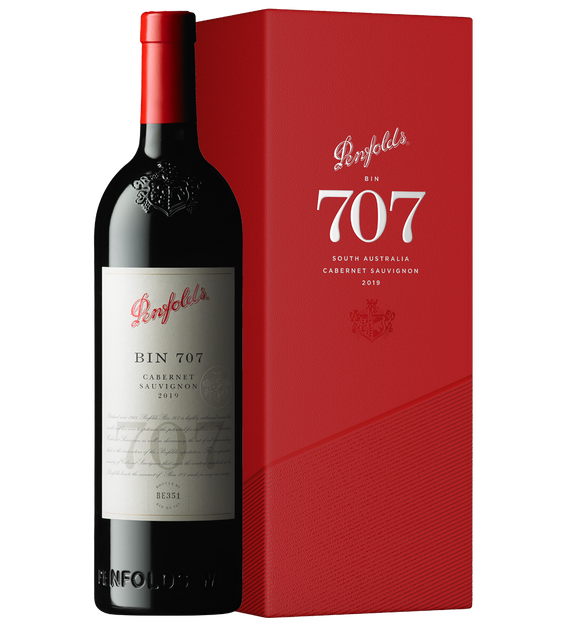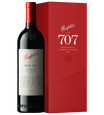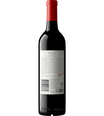一起开启您的传奇吧。
Bin 707 Cabernet Sauvignon 2019 Gift Box
The Penfolds Collection
Bin 707 Cabernet Sauvignon 2019 Gift Box
Bin 707 perfectly reflects the Penfolds ‘House Style’ through a cabernet sauvignon lens: intensely-flavoured fruit; completion of fermentation and maturation in new oak; expressing a Penfolds understanding of multivineyard, multi-region fruit sourcing.
Full-bodied and with proven cellaring potential, Bin 707 retains a secure place among the ranks of Australia’s finest cabernets.
| 种类
Cabernet Sauvignon
|
Cabernet Sauvignon |
|---|---|
| 年份
2019
|
2019 |
| 容量
750 mL
|
750 mL |
| Closure
Cork
|
Cork |
| 最佳品鉴期
2025-2050
|
2025-2050 |
Bin 707 perfectly reflects the Penfolds ‘House Style’ through a cabernet sauvignon lens: intensely-flavoured fruit; completion of fermentation and maturation in new oak; expressing a Penfolds understanding of multivineyard, multi-region fruit sourcing.
Full-bodied and with proven cellaring potential, Bin 707 retains a secure place among the ranks of Australia’s finest cabernets.
Altogether stylish, persuasive.
– Peter Gago, Penfolds Chief Winemaker
| 98 Points - Ken Gargett - World of Fine Wine Magazine |
| 97 Points - Andrew Caillard MW |
| 97 Points - Huon Hooke |
| 97 Points - James Halliday |
| 97 Points - Tyson Stelzer |
Ken Gargett
" Classic blackcurrant mulberry aromas with roasted chestnut, graphite notes. Ample, yet elemental and multi-layered with plentiful pure blackcurrant mulberry fruits, fine persistent grainy/ muscular tannins, superb mid-palate richness and underlying mocha roasted chestnut notes. Finishes brambly firm with plenty of cedarwood cassis notes. A sturdy Bin 707 with beautiful fruit definition and tannin vigour. Claret lovers rejoice! "
Tyson Stelzer
"Such a bold statement of new American oak seems somehow old-fashioned in this day and age of Australian cabernet, and yet there is a comfortable assurance about the irrefutable Bin 707 model, promising that the woodwork will find its place with sufficient patience. The purity and precision of cassis and blackcurrant fruit on display is something to behold. Fruit and oak sit apart for now, but each in their rightful place, and, as ever, promise great things. Line and length of the highest order confirm it will go the distance without the slightest doubt."
Andrew Caillard MW
" Classic blackcurrant mulberry aromas with roasted chestnut, graphite notes. Ample, yet elemental and multi-layered with plentiful pure blackcurrant mulberry fruits, fine persistent grainy/ muscular tannins, superb mid-palate richness and underlying mocha roasted chestnut notes. Finishes brambly firm with plenty of cedarwood cassis notes. A sturdy Bin 707 with beautiful fruit definition and tannin vigour. Claret lovers rejoice! "


The unravelling begins - immediately laden with black olive and cigar-leaf cabernet appeasements.
Then allowing the florals to soar - violet, lavender and baby’s breath.
Accompanied by bursts of sea spray (41% McLaren Vale?) and formic (hint of barrel ferment?), iodine/haemoglobin.
Beneath the elution throughout - roasted meats in tandem with cinnamon bar/Dijon mustard seed.

Certainly the sum of its parts…
McLaren Vale: front palate plushness, and sea spray.
Coonawarra: terra rossa red-dustiness, earth.
Barossa Valley: a solid core, and a drive that stridently lunges to the back-palate.
A mid-palate richness with layers of discrete regional cabernet tannins …In every sense, ‘well-connected’.
Vintage Conditions
The South-East growing districts of South Australia enjoyed above-average winter rainfall, while McLaren Vale and the Barossa Valley recorded well below-average. September temperatures were cool with little rainfall resulting in some isolated frost events. Summer was generally hot, with high temperatures delaying veraison. The Barossa Valley experienced 31 days of temperatures exceeding 35°C, while Coonawarra experienced 20 days of temperature greater than 35°C during the months December to March. Irrigation was crucial to keep vines in good health. The proximity of the Southern Ocean played an important role in moderating temperatures in Coonawarra and Padthaway, allowing for a high-quality harvest, albeit with smaller yields than average. Although yields were smaller, the quality was outstanding with cabernet sauvignon displaying excellent colours, firm tannin profiles and intense flavours.
| GRAPE VARIETY
Cabernet Sauvignon
|
Cabernet Sauvignon |
|---|---|
| VINEYARD REGION
McLaren Vale, Coonawarra, Barossa Valley, Padthaway
|
McLaren Vale, Coonawarra, Barossa Valley, Padthaway |
| 葡萄酒分析
酒精浓度: 14.5%, pH: 3.52, Acidity: 6.9g/L
|
酒精浓度: 14.5%, pH: 3.52, Acidity: 6.9g/L |
| MATURATION
18 months in American oak hogsheads (100% new)
|
18 months in American oak hogsheads (100% new) |
The Bin 707 Story
Inspired by the iconic jet that took it to the world. The rich and powerful Bin 707 Cabernet Sauvignon, our first commercial release of a single cabernet-based wine, is linked to Max Schubert’s dream of making a great Australian red wine that could last at least 20 years. During the ‘50s and early ‘60s cabernet sauvignon was mostly used for blending, but Schubert’s breakthrough with the varietal as a stand-alone wine came in 1964 with inaugural vintage. Early Bin 707s were typically open fermented under wax-lined header boards and matured in seasoned old oak (rather than new oak). The wine was not made from 1970 to 1975 (when fruit was directed to other wines) nor in 1981, 1995, 2000, 2003, 2011 or 2017 (when fruit of the required style and quality was not available).
Discover Collection


